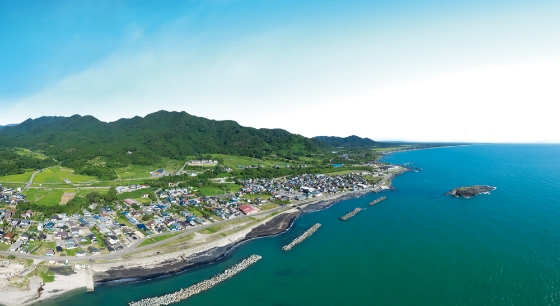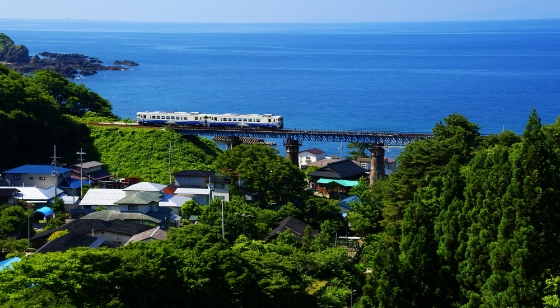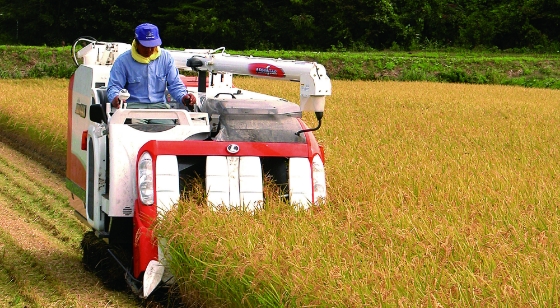I will show you some great sight in our town!
Contact: Happo Tourism Association http://www.happouta.jp/home/
Sake, or nihonshu, is a fermented alcoholic drink made from rice, fungus (kōji), and water. It has been drunk in Japan in various forms since before recorded history. The mountains of Shirakami Sanchi yield pure spring water with a low mineral content, and the fields produce rice known nationwide for its delicate taste and aroma. Together, they are the key to the region’s excellent varieties of local sake.
By the sixteenth century, sake brewers had established most of the techniques that continue to be used by their successors today: polishing the rice grains, a heated pasteurization process, and the use of large wooden tubs for storage. In the nineteenth century, brewers began to add a type of fungus called kōji to steamed rice to cause fermentation. This is one of several aspects that creates variety in the finished taste. Another important factor is polishing the rice—specifically, how much of the rice grain is ground away. As more of the protein-filled outer hull is removed, the remaining starch-filled center makes up a greater percentage of the fermentation mixture, altering the final flavor. For the premium sake known as daiginjō, at least 50 percent of the rice grain must be polished away, while as much as 70 percent of each grain is removed for the most expensive varieties.
There are two sake breweries on the Akita side of Shirakami Sanchi: Yamamoto Brewery and Kikusui Brewery.
Yamamoto Brewery
Yamamoto Brewery in Happō was established in 1901 in what was then the small fishing village of Hachimori. To pipe fresh spring water to the brewery’s seaside location, community members laid a private waterline over 3 kilometers long. Although it was originally run under the direction of a master brewer (tōji), in recent years the brewery has adopted a more communal, employee-driven system.
Yamamoto Brewery produces junmai sakes (made without the addition of sugar or distilled alcohol) in several grades. Because junmai relies so heavily on rice for its flavor, rice quality is of the highest importance. Yamamoto Brewery cultivates its own rice to ensure standards are met. Roughly half is grown organically, with no pesticides or chemical fertilizers.
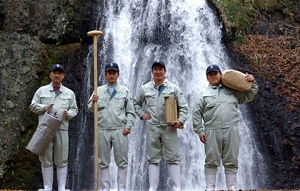
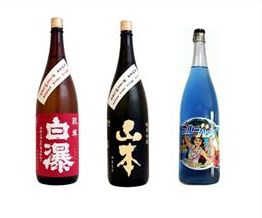
Kikusui Brewery
Kikusui Brewery in the city of Noshiro began operation in 1875. The brewery stores its sake underground in a 100-meter-long former railway tunnel built in 1900; this keeps the sake at an ideal 12°C year-round. Kikusui produces a wide range of sakes, from inexpensive varieties to daiginjōpriced at ¥100,000per bottle. The brewery values its regional identity and its strong connection to the town of Noshiro.
Changing with the Times
Despite sake’s lengthy history, nationwide production has shrunk to a third of its early 1970s peak as consumers—particularly young people—have shifted to drinking other beverages. In response, five Akita breweries with lineages dating back 100 to 330 years formed a group to collaboratively revitalize their businesses. Calling themselves the “Next 5,” these comparatively young owners were facing similar problems, such as conflicts with their breweries’ older master brewers, who were often resistant to new ideas. Now the Next 5 owners are working together to create new beverage varieties (such as sparkling sake) and marketing strategies that appeal to younger drinkers, as well as expanding into overseas markets. One of the Next 5 members is Yamamoto Tomofumi, owner of Yamamoto Brewery, which now exports to 12 countries.
* This English-language text was created by the Japan Tourism Agency

